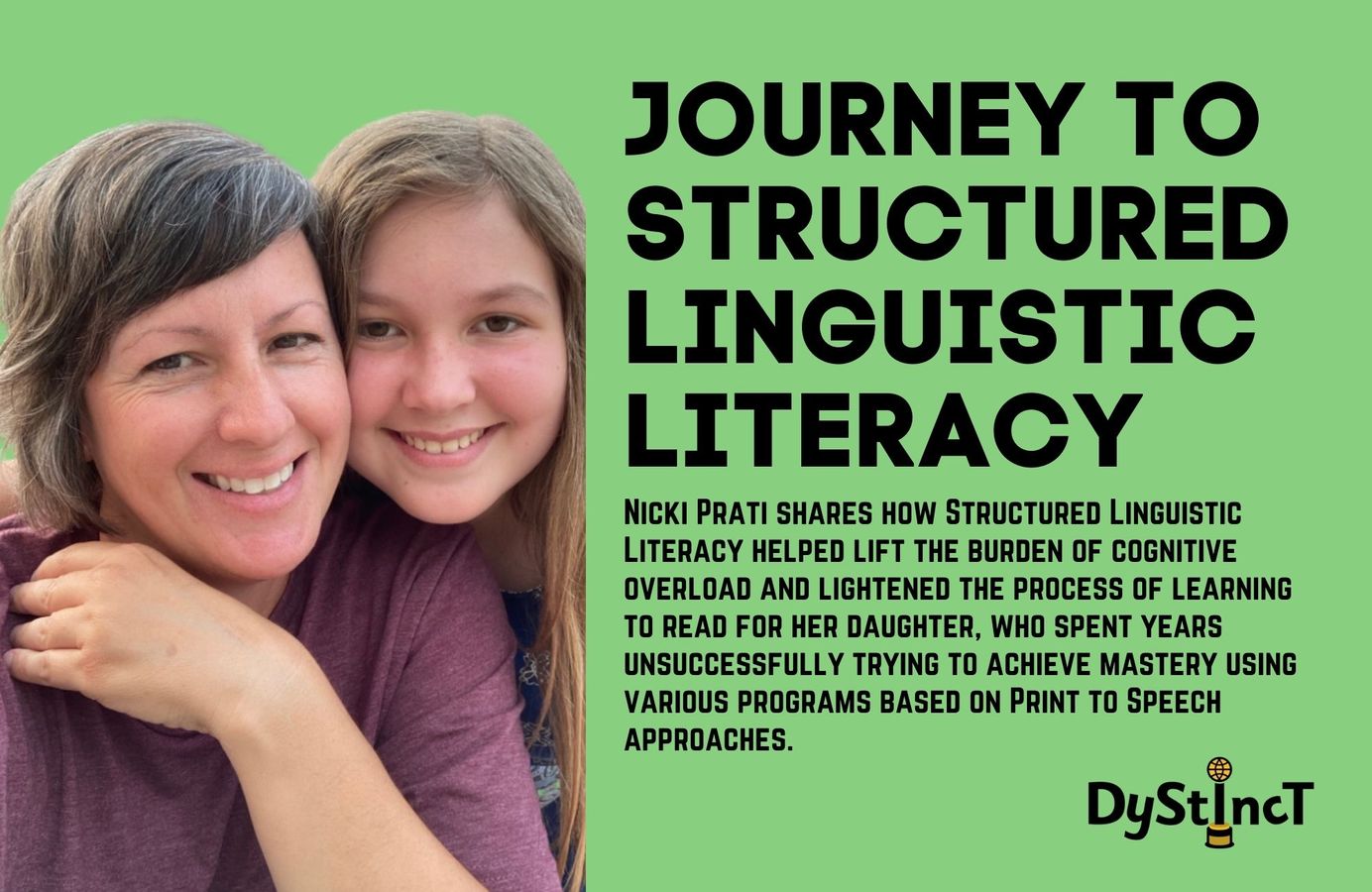
Issue 13: Journey to Structured Linguistic Literacy | Nicki Prati
Nicki Prati shares how Structured Linguistic Literacy helped lift the burden of cognitive overload and lightened the process of learning to read for her daughter, who spent years unsuccessfully trying to achieve mastery using various programs based on Print to Speech approaches.
Cut to the chase
According to Wiki, the history of the phrase 'cut to the chase' originated from the entertainment industry's car chase scenes in films. "Some inexperienced screenwriters or directors would pad the film with unnecessary dialogue, which bored the audience and prolonged the time before the exciting chase scene. Cut to the chase was a phrase used by movie studio executives to mean that the audience shouldn't get bored by the extra dialogue and that the film should get to the interesting scenes without unnecessary delays. The phrase is now widely used and means "get to the point."
After years of intervention and after-school tutoring with explicit Print to Speech methods, my child was still a struggling reader; the need to 'cut to the chase' became more significant. What started as a sense of urgency to get to "grade level reading" with structured, explicit instruction turned into four years of dual enrolment and home-schooling with a go-to home program for children with dyslexia. Lots of hours were spent trying to achieve mastery in phonemic awareness, segmenting and blending of the initial code in isolation, spelling "rules" and their exceptions, as well as decodable books. Eventually, after a total of six long years of intervention, we hit a roadblock called 'cognitive overload'.
Flip the script
Little did I know, when I settled into a standard Print to Speech oriented intervention, I had signed up for lesson upon lesson of 'all things spelling and syllable rules'. The split-attention problem-solving of learning cognitively heavy syllable division constructs and applying them to reading was exhausting. It was a deal breaker and a spirit crusher. We couldn't afford any more speed bumps. With preteen hood around the corner, I was back to the grindstone, looking for answers. Simpler, faster, and effective was key, as 'cut to the chase' had become critical. Times like these require a person to step back and reflect. Reflection led to a reassessment and another deep dive into instructional methods, literacy products and more reading science articles.
Fortunately, I had invested in a high-quality decodable book series for catch-up readers by Phonic Books, trusting that eventually, we would get to vowel teams. Yes, vowel teams! At age 12, we had stalled in syllable division rules, barely touched two letter vowel spellings, and hadn't reached the "magic E" lessons. Upon a closer look at the Phonic Books "Moon Dogs Vowel Series" decodables and its free online resources, I began to see a pattern emerge. Being a psych major and artist at heart, I stopped thinking about 'rules and exceptions' and allowed this new pattern to guide my home instruction. I was just going to have to do this thing on my own and literally 'flip the script' as I knew it by sticking with one sound to multiple spellings every couple of weeks.
Almost instantly, the weight of learning (and teaching) encoding and decoding lightened. It was a visceral experience for myself and my child. Fast forward to today, and I now know this was because we were working from the direction of language first, what some cognitive scientists call biologically primary skills. Not only were we starting from a place of strength, but explicit instruction was organized in digestible portions of sound spellings. I wasn't aware of the research demonstrating that starting from encoding first actually supports decoding, and I didn't know that current research found syllable division rules to be unreliable. What I did know is that the orientation and the way in which knowledge was dispensed in this method lightened the cognitive load tremendously. Teaching from this direction felt a bit like being taught a new card game and then being shown your opponent's cards; it made the game much easier.
Linguistic Phonics was keeping it simple by teaching the written code in the direction it was intended - from speech to print.
This post is for paying subscribers only
SubscribeAlready have an account? Log in


